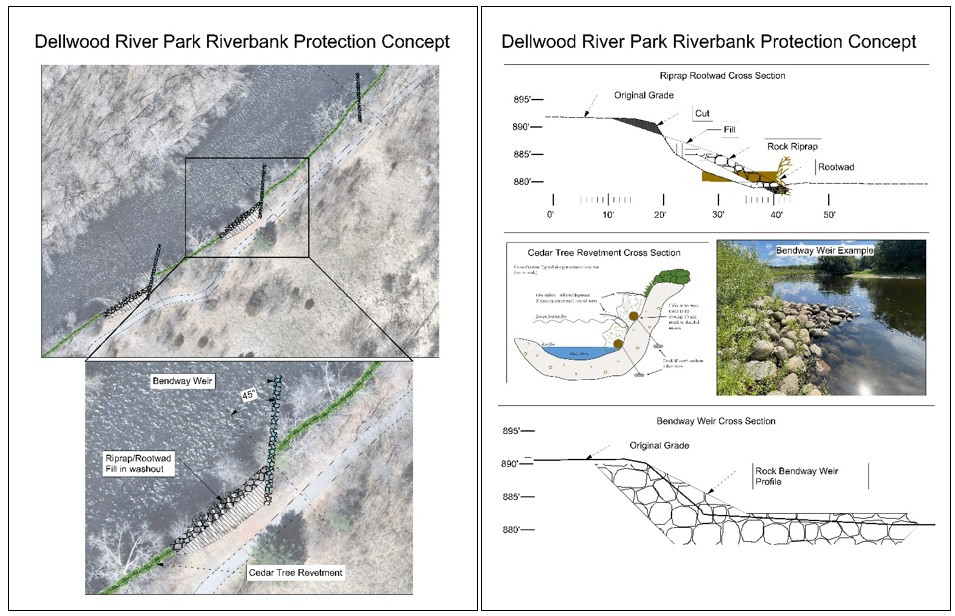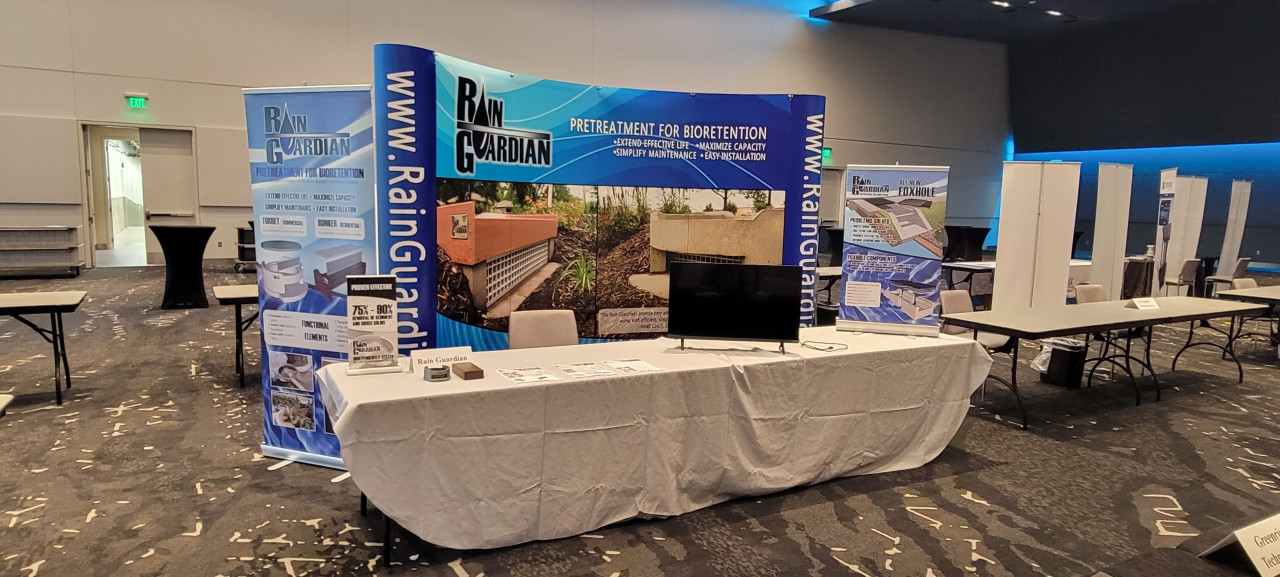Construction is complete for a Rum Riverbank stabilization at Dellwood River Park in St. Francis. Erosion of the riverbank was resulting in the loss of numerous trees into the river and was threatening a popular local walking trail. The project design features three primary protection measures.
- Two severely eroding zones of riverbank were armored with rock riprap, and 14 large tree rootwads were added as in-stream habitat.
- Three rock bendway weirs were installed, protruding at 45° into the river. These low-lying features, will push flow and erosive scour back toward the middle of the channel, rather than along the outer bank.
- And finally, the less severely eroding areas of riverbank were armored with cedar trees in a bio-engineering technique called "cedar tree revetments".
In total, this project stabilizes 630 feet of riverbank, enhances 0.75 acres of in-stream and riparian habitat, and reduces annual loading into the river by 60 tons of sediment and 51lbs of phosphorus. The project also incorporates multiple features to enhance fishing opportunities and provide additional in-stream habitat.
For more information contact Jared Wagner, Water Resource Specialist,





